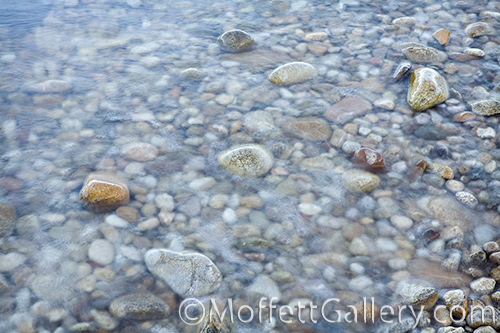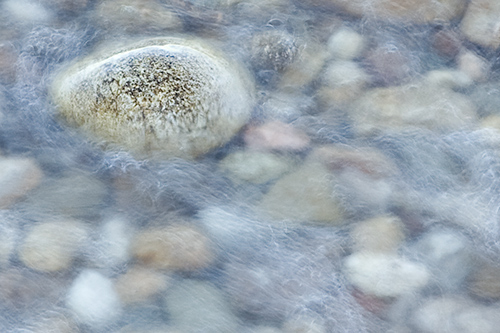“How do you capture the motion of water like you do?” That is a question that frequently comes up when I visit with others who are relatively young in the art of photography. It is a question that has a multitude of answers. There is one thing in common with the answers, though. It is all about shutter speed.
The shutter speed is the exposure control that determines how anything in motion is rendered in the final image. If I want to stop the motion, then a very fast shutter speed is necessary, and conversely, if I want to allow the motion to be seen in the still image, a slow shutter speed is needed. How fast or how slow? That is where experience is necessary. It all hinges on how fast the subject is moving and what effect you want portrayed. In the case of this image, with the roughly four inch waves lightly lapping against the rocks near the shore creating bubbles and foam, a .6 second shutter speed was selected so that the bubbles in motion would be evident. Any slower and they would disappear into a blur of motion. Any faster and they appear to be standing still. As is, the lines and streaks are what creates the interest in the image. Take a look at the detail image below.
Using shutter speed to control motion in photography is something that can only be learned through experience. I have shot thousands of images and analyzed them to get where I am today, and I am still learning and refining my craft. I have learned that motion in a photograph can be used to create mood and feeling. What that mood or feeling is depends on the amount of motion exhibited. The amount of motion shown is completely determined by what shutter speed is selected.
Take control of your image making by taking your camera off of Auto or Program mode, switch to Manual Mode and have fun! Don’t get discouraged by a few mistakes, but analyze them and learn from them. In a short time you will see major improvements in your ability to create more personal meaningful photographs through the use of motion.




Recent Comments